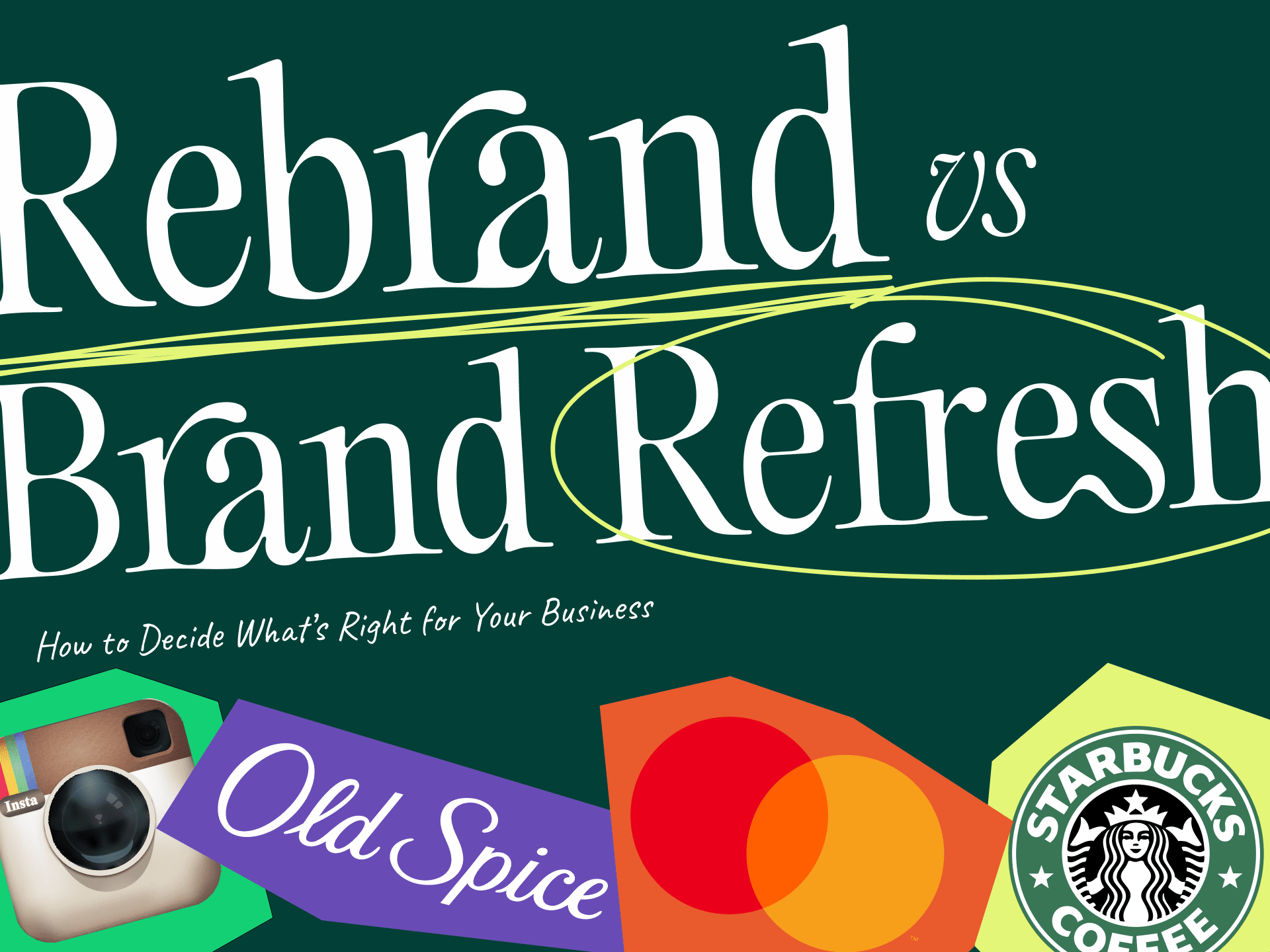
In the dynamic world of business, staying relevant and resonant with your audience is paramount. Whether your brand is experiencing stagnation, facing new market challenges, or simply evolving, the need to update your brand identity becomes inevitable. The question then arises: Should you undertake a full rebranding or opt for a brand refresh? We have clients come to Tilted Chair all the time with this dilemma. Understanding the differences and implications of each can help you make an informed decision that aligns with your business goals.
What is Rebranding?
Rebranding involves a complete overhaul of your brand’s identity. This can include changing the name, logo, visual elements, messaging, and even the core values and mission of the company. Rebranding is often driven by significant changes within the company or the market, such as mergers, acquisitions, shifts in the target audience, or a desire to distance the brand from negative associations.
Key Indicators for Rebranding:
- Major Structural Changes: If your company has merged with another or has undergone significant structural changes, rebranding can unify the new entity under a cohesive identity.
- Target Audience Shift: A substantial shift in your target market may necessitate a rebranding to appeal to the new demographic.
- Market Repositioning: When a company decides to change its market position entirely—such as moving from a budget-friendly brand to a premium one—rebranding helps to realign customer perceptions.
- Negative Public Perception: If your brand has been tarnished by controversy or scandal, rebranding can provide a fresh start and distance the company from past issues.
- Growth: We probably encounter this the most. When a company brand has remained unchanged for years or decades despite the evolution of their product or service. This creates a situation where your brand has become a liability and no longer reflects the quality of your products or services.
Case Study: One of the best Oyster Companies in the Gulf of Mexico reached out to us to rebrand their company. This is a family business and some new members were going to be taking the lead in running the company. Additionally, they were putting more effort into promoting their sustainable oyster farming. So while the name remained the same, all else needed a change. [Add images from rebrand]
What is a Brand Refresh?
A brand refresh is a more subtle update, focusing on modernizing and refining existing brand elements rather than completely overhauling them. This can include tweaks to the logo, color palette, typography, and messaging to ensure they are up-to-date and align with current market trends.
Key Indicators for a Brand Refresh:
- Outdated Visuals: If your brand’s visual elements look dated, a refresh can modernize your appearance without losing brand recognition.
- Market Evolution: As market trends evolve, a brand refresh can help keep your brand relevant without the need for drastic changes.
- Enhanced Differentiation: Slight adjustments can help differentiate your brand in a crowded market, making you stand out while retaining your core identity.
- Product or Service Updates: Introducing new products or services that align with your current brand can be highlighted through a refresh.
Case Study: One of our favorite brand refreshes is for Sendero Homes, a luxury home builder in Central Texas. Sendero felt the name and logo had a lot of brand equity, but needed to create a more upscale image and expand their branding, especially on their website. Challenge accepted. [Add images from rebrand]
Making the Decision: Rebranding or Brand Refresh?
Deciding whether to rebrand or refresh your brand hinges on the depth of change required and the objectives you aim to achieve. Here are some guiding questions to consider:
- What are your goals? If you aim to shift market perception entirely or recover from a major setback, rebranding might be necessary. For updating aesthetics or making minor adjustments, a refresh is more appropriate.
- How drastic are the changes? Significant internal or external changes call for rebranding. Smaller, aesthetic updates point towards a brand refresh.
- What is your budget? Rebranding can be costly and time-consuming, involving market research, design, and extensive re-marketing efforts. A brand refresh, being less intensive, is generally more budget-friendly.
- What is the market context? Analyze current market trends and competitor actions. If competitors are innovating rapidly, a refresh can help you stay competitive without drastic measures.
Conclusion
Both rebranding and brand refreshes serve as crucial strategies in the life cycle of a business, each with its own set of triggers and outcomes. Understanding the distinctions between the two and evaluating your specific needs will help you choose the right path. Whether you’re looking to reinvent your brand or simply keep it contemporary, the key is to ensure that your brand continues to resonate with your audience and reflect your company’s evolution. If you need help deciding we are always happy to offer free consultations at Tilted Chair. Just give us a holler!
